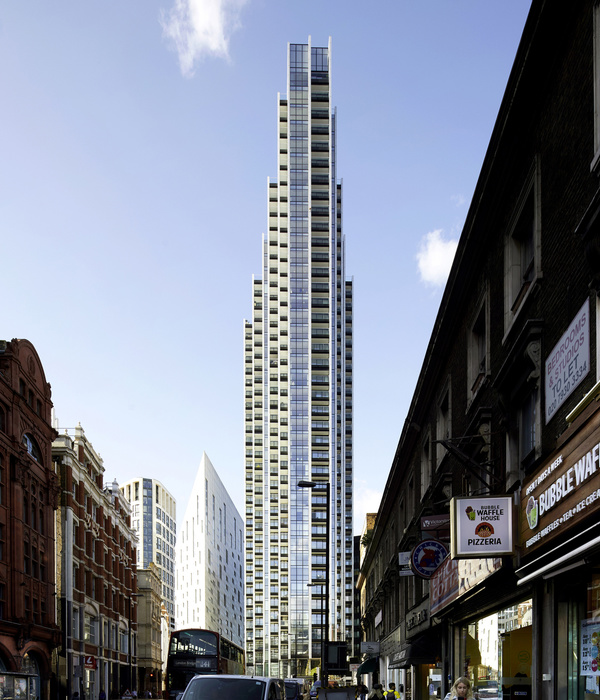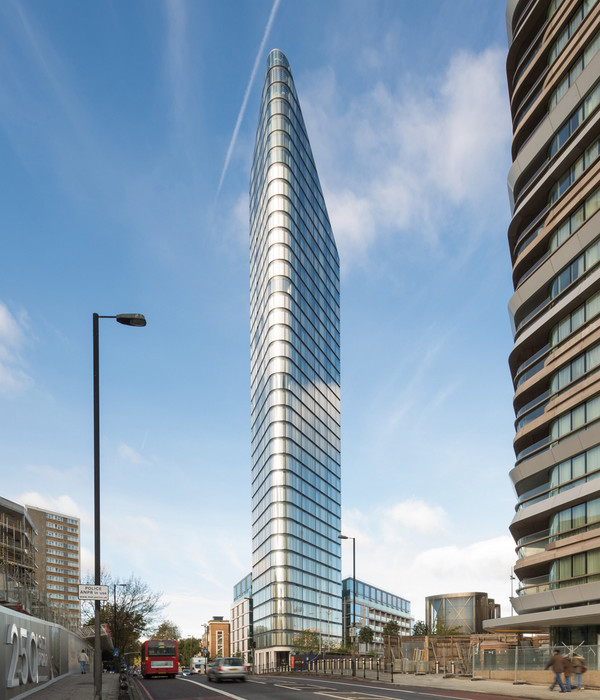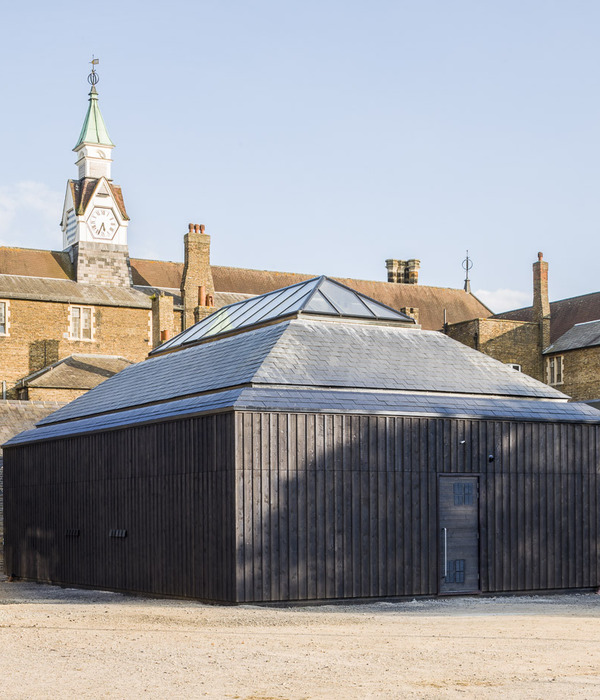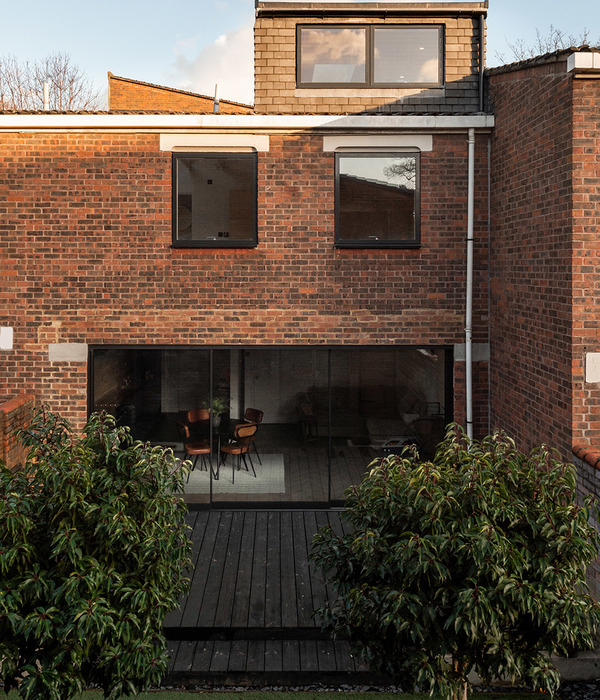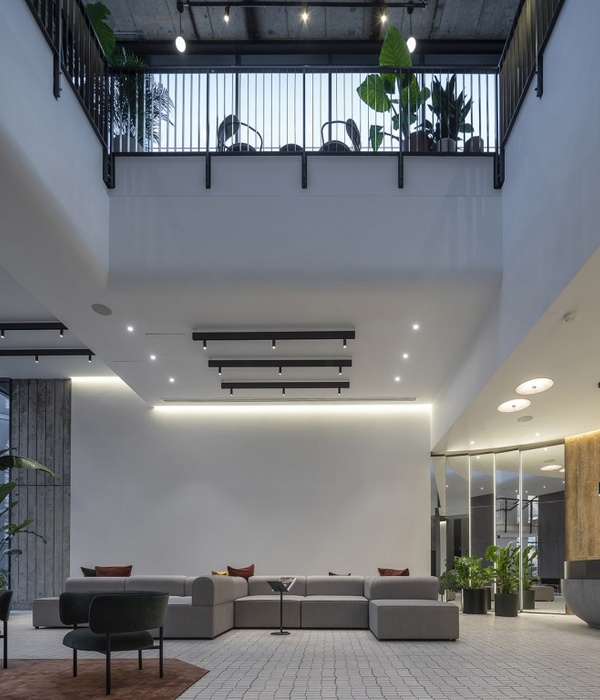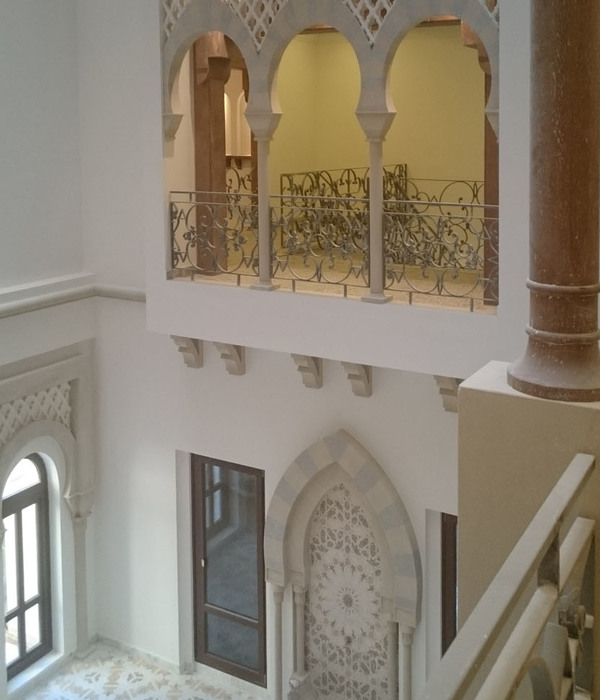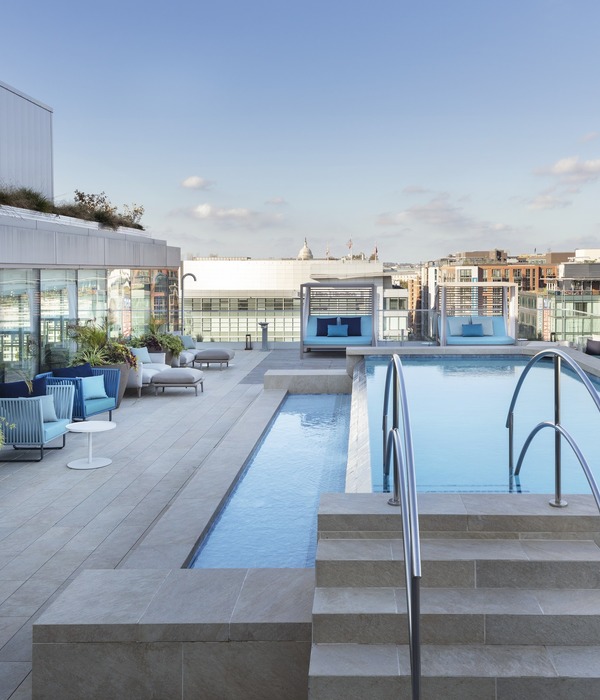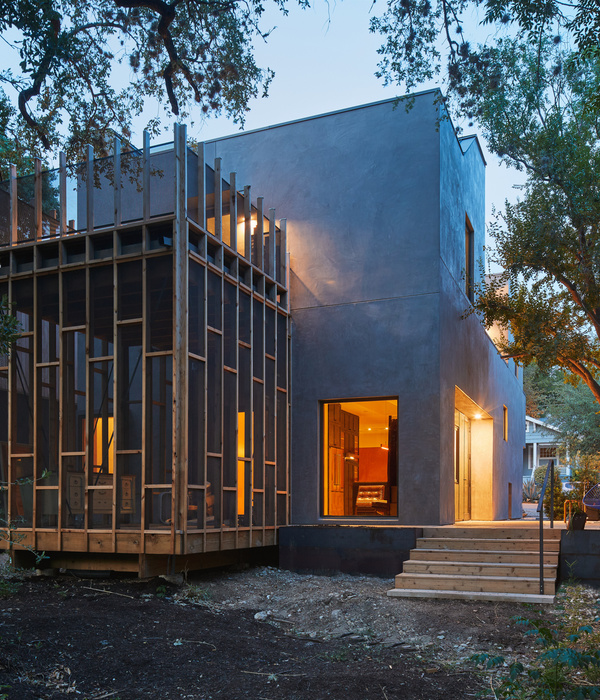Forma Vila is a residential house on the outskirts of Ravne na Koroškem, a small Alpine town close to the Slovenian-Austrian border. The town has an over 400 year-long tradition of iron-making, and the local ironworks have had a significant social-economic influence on the town, its sports and culture. The latter has been especially evident since 1964, when the factory started supporting sculpture symposiums “Forma Viva” for artists from all over the world. There are 40 Forma Viva sculptures located all over town, making it a large outdoor gallery, and it is this cosmopolitan project that has given Forma Vila its design context and served as its inspiration. The name itself, Forma Vila, is a play on the words Forma Viva, but the main resemblance between the art movement and the house lies in form and the materials used.
The house for a family of three is located at a hill-top only a hundred meters away from the nearest two sculptures. Other sculptures can be seen in the distance. Each floor has its own dynamic shape, the square volumes overhanging one another. The house is wrapped in a metallic façade, providing a direct link with the sculptures.
Structurally the house is divided into the bottom part made from brick and clad in a local-stone façade, and two upper floors with a mass timber construction. The use of wood, the only CO2 positive material, is not only sustainable, but makes the house lighter and required less piling on a demanding hilly terrain. The grey green colour of the copper-zinc façade makes the building visually blend in with the nearby forest. This façade requires a next to nothing maintenance.
One enters the house through a spacious lobby on the mid floor. Magnificent views immediately open through the living room windows, the tapestry of the ironworks buildings spread out below, and behind them the town centre with the Javornik Castle in the distance on one side and the surrounding forest on the other. The living room is located in a top-spot console with three fully glassed sides. The night atmosphere, when the city and the factory are ablaze with lights, creates a special cosmopolitan feeling, almost Manhattan-like. The living room is spacious yet cosy with a fireplace and wooden floors. It continues into a spacious kitchen with a dining area that opens onto a terrace facing the west. The mid floor has an open layout with literally no doors and a good visual connection between spaces. The upper floor accommodates private spaces, two bedrooms with a bathroom and its own separate-placed wooden terrace each. With its overhangs and terraces, the house flirts with nautical architecture as well. Wooden decks on both sides of the central area imitate the yacht typology. The resemblance continues in certain details, such as the fully-glassed terrace fence pulled back from the façade axis, which minimizes its effect on the volume of the house.
There is room for an additional independent apartment with its own terrace on the ground floor, intended for the daughter. Currently the ground floor is used as an art gallery. This floor also includes all the service rooms, home office and guest bedroom.
Forma Vila is designed as a sustainable low-energy house. It uses local materials, a façade that needs no maintenance, extensive insulation, and careful detailing in order to avoid thermal bridges. Despite its sculpture-like design, the house is still fairly compact, with the openings mostly to the south-east and the north façade blank. A heat pump is used for energy efficiency, and solar tubes on the south-east façade heat water.
Forma Vila is a family house designed in a contemporary manner while at the same time preserving ties with the cultural traditions of its location and using local materials in a modern disguise. As such it brings to the area new standards in residential architecture.
Year 2014
Work finished in 2014
Status Current works
Type Single-family residence
{{item.text_origin}}

